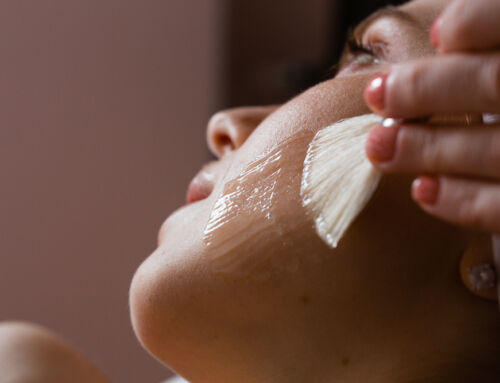If you are looking over your shoulder to make sure nobody sees that you are looking at an article about facelifts, using an “incognito window,” or erasing your browsing history because you don’t want anyone to know you are considering a little surgical lifting and tightening– you aren’t alone. Even though plastic surgery isn’t the taboo topic it once was, some still feel shame about having a facelift procedure or even simply considering it.
Let’s be real; we all want to look as young and radiant as possible, and if a facelift can help us achieve that, then why not go for it? Don’t let societal beauty standards make you feel you have to hide your desire for a little nip-tuck. After all, it’s your face and your happiness.
Even if you don’t have a care in the world about who knows your desire to get a facelift, you probably find the thought to be a bit overwhelming. This is a natural feeling. The name alone would lead anyone to have some hesitation.
Let’s break down the facts, dispel the myths surrounding facelifts, and tell you about all your facelift surgery options, so you can make an informed decision that hopefully allows you to feel comfortable about committing to facelift surgery.
Facelift Myths and Truths
A facelift is a plastic surgery procedure that improves the appearance of the face by removing excess skin and tightening the underlying tissues to create a more youthful look. It’s like getting a brand new face but with your own face. Everything else you see on the internet about the procedure may or may not be accurate.
From thinking you will be down and out for months to thinking you’ll look like a different person and you have to be a certain age to get one. There are a lot of myths about facelifts. Let’s clear some of them up!
A facelift is an invasive surgery – We’ve come a long way in terms of technology and how much safer and more effective facelifts (also known as a rhytidectomy) are now. In the old days, facelifts were pretty much like the Wild West. But now? It’s like a walk in the park.
A facelift (even a full one) is actually considered a minimally invasive plastic surgery procedure.
Years ago, facelift recovery was painful, and recovery would take many weeks. Today, however, the recovery is shorter. Of course, recovery varies from patient to patient. Some people naturally heal faster than others. How well you take care of your skin after the operation and follow post-op instructions also comes into play. Many of our patients don’t even require prescription pain medication. Depending on these factors and the extent of the facelift procedure, most say pain dissipates within a couple days after the procedure, and most are back to their normal activities and work in two weeks.
A facelift will make me look unnatural – In the right hands and with today’s modern techniques and technology, a good facelift should leave you looking refreshed and natural, not stretched, pulled, plastic or looking like another person. A facelift should enhance your features, not change your appearance. Let’s just call a facelift what it really is: a confidence booster. It’s like a little pick-me-up for the face.
Facelifts are only for older people – While it’s true that the majority of people who get facelifts are over the age of 40, anyone of any age who wants to improve their appearance can consider a facelift. It’s a matter of personal preference and individual needs.
Facelifts are only for women – Another common myth is that facelifts are only for women. But the truth is, men can also benefit from the procedure. A facelift can improve the appearance of the face for both men and women, regardless of gender.
A facelift is a one-time procedure – A facelift doesn’t stop the aging process. Over time, the aging process will continue, and the skin will lose elasticity. That said, the effects of a facelift can last for many years, in most cases well over a decade. It is hard to say exactly how long a facelift will last; that will depend on individual skin quality and how it responds in the aging process. Also, how well you take care of your skin. You do invest in medical-grade skincare and wear sunscreen even on cloudy days, right?
Facelifts are risky – Facelift procedures are relatively safe, but as with any surgery, there are risks involved. Nevertheless, if you choose a board-certified plastic surgeon and follow their post-operative instructions, you can minimize the risks.
All Facial Plastic Surgeons Are the Same – Two plastic surgeons can have the same credentials, but that does not ensure their training, techniques, and talent are equal. Take your time selecting a surgeon you feel comfortable with, as they are not all the same. Ask to see some before and after pictures, check out customer reviews and go for a consultation to get a sense of their bedside manner. Ask about their approach to surgery and post-surgical care, and make sure it feels like you’re going into your procedure with a team you can trust.
Different Types Of Facelift Procedures
Different types of facelifts are available, each with specific benefits. Here are a few types of facelift procedures:
The traditional facelift: This is the classic procedure focusing on reducing wrinkles and sagging of the entire face. To accomplish this, an incision is made from the hairline down to the front of your ears and ends just behind the earlobes. The plastic surgeon will then access the mid and lower face tissues and gently lift and reposition deep tissue. Excess skin and other tissue may also be removed to ensure your skin is smooth and tight.
The mini face lift: A less invasive version of the traditional facelift, the mini facelift targets the lower face and is excellent for those looking for a subtle, refreshed look. To accomplish this, several much smaller incisions are made around the hairline and ears. Through those incisions is where the plastic surgeon will tighten up the skin and other tissue around your jawline, jawbone and cheeks.
The mid-face lift: Sometimes called a cheek lift, this procedure focuses on tightening the upper mouth, cheeks and the area around the eyes, which can give you a more youthful appearance and help make the under-eye area appear less sunken. To perform a mid-facelift, a couple of small incisions are made by the hairline, then the surgeon goes in and tightens the muscles and manipulates the fat pads under the skin.
A brow lift: A brow lift focuses the brows and forehead, but it can rejuvenate your entire face. The procedure involves removing sagging and excess skin from your forehead and repositioning underlying muscles and tissues. This results in a brighter, naturally alert, and more refreshed face.
The neck lift: Sometimes known as a lower rhytidectomy, a neck lift is not technically a facelift; instead, it is a cosmetic surgery procedure that improves the appearance of the neck by removing excess skin and fat and tightening the underlying muscles. However, it is often performed in conjunction with a facelift or mini facelift.
Are You Ready For A Facelift Procedure?
Many people wonder when the best age to get a facelift is. As mentioned above, there is no black-and-white answer. The average age for women is the mid-40s to early-50s. Still, many wait until they are in their 60s or 70s and even older and have excellent results. The decision to have a facelift is a personal one. The “right time” is different for everyone.
It doesn’t matter how young or old you are, if you’re tired of people thinking you’re just tired all the time because of the bags under your eyes and saggy jowls, hate looking in the mirror to see advanced signs of aging and loose skin and are wondering where the youthful you went, a facelift procedure can no doubt turn back the hands of time.
That said, you should be in a good place physically and mentally before booking your appointment.
Physical Considerations Before A Facelift
While you will go under the knife, be put under general anesthesia and need to plan for a little bit of downtime to heal from the bruising and swelling, a facelift is actually considered a minimally invasive surgery, so there isn’t a long list of requirements. For the most part, if you are a nonsmoker who is in generally good health, you are likely a good candidate for a facelift.
Mental Considerations Before A Facelift
Determining if you are mentally ready is trickier. There will always be parts of our bodies that we care for and cannot change with diet, exercise, injections, or makeup. If that’s holding you back from having the confidence to go on a beach vacation, go on dates, get intimate with your spouse, or just be more social, then there’s nothing wrong with seeking a surgical solution.
However, if someone else is telling you “need plastic surgery,” or you’re always looking in the mirror and calling yourself names and feeling worthless, you should take a step back and ask yourself some tough questions. Do I want a facelift because of my physical appearance? Or is this a deeper issue? Sometimes, surgery doesn’t make people feel any more attractive because they have deeper issues with insecurities and self-worth.
You’re On The Right Track
Whatever your age or reason, you are here reading this article, which means you are taking the most important first step– your homework!
You must be fully prepared for precisely what the procedure will look like from beginning to end. If you want to learn more about being a good candidate for facelift surgery, what to expect from beginning to end, and how the procedure is done, click here. Our team is also always just a phone call or consultation away from answering any questions you might have about a facelift procedure.
Speaking of, we would be honored if you placed your trust in our team to perform your surgery. Whoever you select, it is important that you have a consultation and do thorough checks on the plastic surgeon, surgical clinic and facility where your procedure will be performed.
Here is a short list of some things you will want to do, questions you will want to be answered during your consultation, and things you might want to observe.
- Check for positive and negative reviews online, but consider the context of the complaint of an unhappy customer. If you find one that is concerning, bring it up during your consultation. Obviously, a surgeon can’t discuss the private details of another patient’s case, but they can possibly shed some light.
- When you arrive, look around! Is the office clean, organized, and professional? Is the atmosphere warm and inviting, and is the staff friendly, courteous, and willing to answer questions?
- While you wait, if you see a patient that appears to be there for a post-op appointment, don’t be afraid to ask them about their experience!
Here are a few things you might want to consider asking the doctor and surgical team:
- Are you certified by the American Board of Plastic Surgery and specifically trained in the field of plastic surgery?
- How many years of plastic surgery training have you had, and how many years have you been practicing?
- How many facelift procedures have you performed? Or is this a procedure you perform frequently?
- Am I a good candidate for a facelift procedure?
- Where will you perform my procedure? Do you have hospital privileges to perform this procedure? If so, at which hospitals? If the procedure is being conducted in an office-based surgical facility – is it accredited by a nationally- or state-recognized accrediting agency, or is it state-licensed or Medicare-certified?
- What facelift procedure and surgical technique is recommended for me?
- How long of a recovery period can I expect, how can I expect my face to look over time, and what kind of help will I need during my recovery?
- What risks and complications are associated with a facelift, and how are complications handled? (do they have a 24/7 emergency line, doctor on call, etc.)
- What are my options if I am dissatisfied with the outcome?
- Do you have before-and-after photos I can look at for this procedure?
Tips To Overcome Fear/Shame Of Considering A Facelift
It is understandable that you would be a bit nervous. We hope that clearing up some of the myths about facelift procedures helped calm some of your nerves. Consider speaking with several people that have had the procedure performed. And, of course, if you have any other fears or concerns, we are happy to answer any questions you have.
As for “shame,” there’s a common misconception that wanting to improve one’s appearance through plastic surgery is something to be ashamed of. But the truth is, there is absolutely nothing to be ashamed of if you want plastic surgery.
Plastic surgery is a personal decision, and it should be respected as such. Whether you want to enhance your natural features or correct something that’s been bothering you for a long time, the most important thing is that you feel confident and happy with yourself. And if that means going under the knife, then so be it.
It’s important to remember that plastic surgery is a form of self-care. It’s about taking care of yourself, both physically and mentally. It’s about feeling good in your own skin, and that’s something that should be celebrated, not shamed!
Just keep in mind what we said earlier. Having plastic surgery is not a shortcut to self-confidence. It’s important that you have realistic expectations about the procedure and understand that the surgery will not change your whole life or solve all your problems. The improvement of physical appearance can have a positive impact on the way you see yourself, but it’s also important to be aware that confidence comes from within.
Conclusion
Facelift procedures have come a long way in terms of technology and safety, making them more accessible than ever before. With the help of a skilled and experienced plastic surgeon like Dr. Robert Garza here at Garza Plastic Surgery in Nashville, you can achieve the results you want while minimizing the risks involved.
Dr. Robert Garza is a double-board-certified plastic surgeon specializing in aesthetic and reconstructive surgical techniques. We also have the pleasure of having the licensed aesthetician and nurse practitioner, Tracey Robinson, on our staff, who can help you find the best options for skin care and other aesthetic treatments that help extend the life of your facelift procedure.
Give us a call or book a consultation or appointment here on our website. We look forward to serving you!





